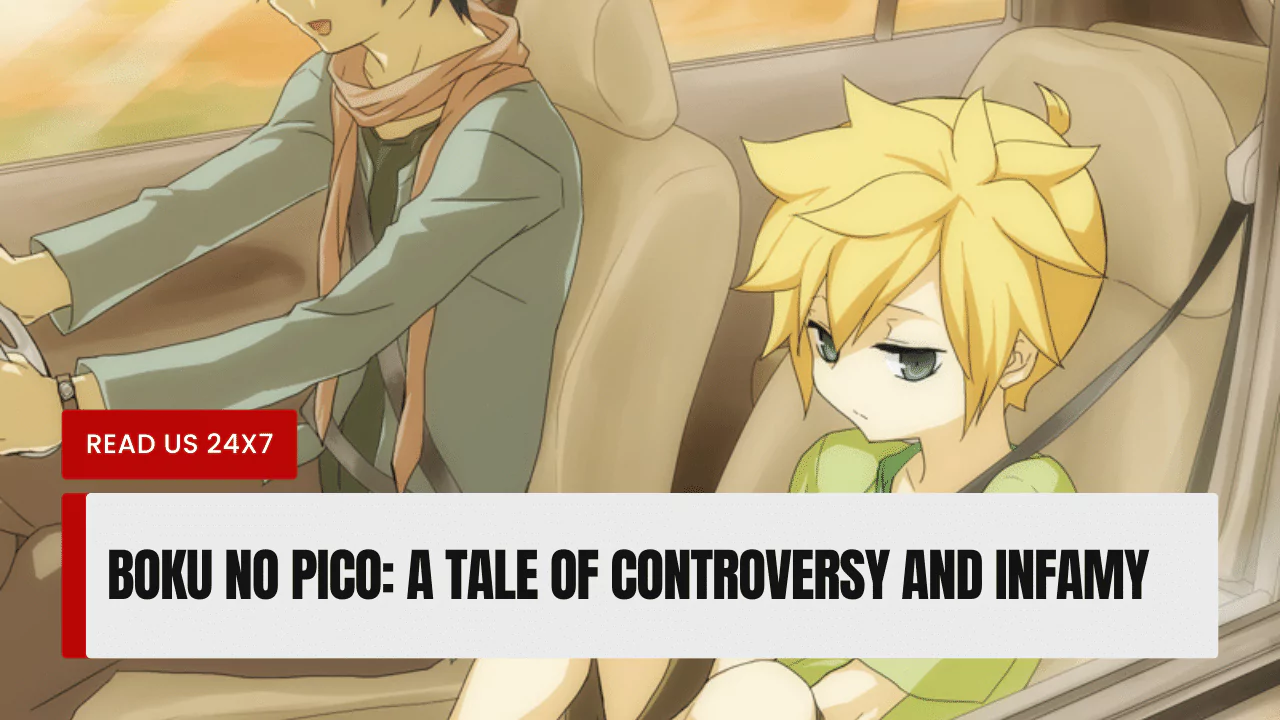Boku no Pico, a Japanese anime series released in 1999, has gained notoriety for its controversial content, primarily depicting sexually suggestive scenes involving underage characters. While it remains a topic of debate among anime enthusiasts, it’s crucial to understand the context and implications of this series.
What is Boku no Pico?
Boku no Pico, which translates to “My Pico,” is a three-episode original video animation (OVA) series produced by Natural High. Pico, a little kid, goes on a summer vacation full of surprises and personal growth in the series.
Brief overview of the series
The first episode introduces Pico, an effeminate boy who works at his grandfather’s café during the summer. He soon meets Tamotsu, an older man who mistakes Pico for a girl and becomes infatuated with him. Their relationship takes a dark turn when Tamotsu sexually assaults Pico.
In the second episode, Pico has moved on from the traumatic experience and befriends a boy named Chico. However, their bond is put to the test when they encounter Coco, a wayward youngster who has made his home in the underground tunnels. Pico develops feelings for Coco, leading to a complex dynamic between the three.
The final episode concludes with Pico’s summer coming to an end. He says goodbye to his new friends and reflects on the experiences he has gained.
Controversy surrounding it
Boku no Pico has sparked widespread controversy due to its explicit portrayal of underage sexuality. The series has been heavily criticized for its normalization of pedophilia and its potential to harm or exploit children.
The Plot
Pico’s summer working at the coffee shop
Pico, an effeminate boy with an androgynous appearance, takes up a summer job at his grandfather’s café. Hoping to make new friends, he eagerly interacts with the café’s customers, seeking connection and companionship.
Meeting Tamotsu and their relationship
One day, Pico encounters Tamotsu, an elderly guy who frequents the café. Tamotsu develops feelings for Pico despite his best efforts to convince himself that he is a female. He lavishes love and care on Pico, bringing him inside his flat.
At Tamotsu’s apartment, their interaction takes a disturbing turn. Tamotsu, under the influence of alcohol, sexually assaults Pico, leaving the young boy traumatized and deeply confused.
The Characters
Pico, Tamotsu, and other supporting characters
Pico, the central protagonist, is a kind-hearted and naive young boy. His effeminate appearance often leads to misunderstandings and unwanted attention. Despite the traumatic experience with Tamotsu, Pico remains open to new connections and experiences.
Tamotsu, the antagonist, is an older man with a predatory nature. He is initially drawn to Pico’s youthful appearance and vulnerability, using his position of power to exploit the boy. Tamotsu’s actions reflect the dangers of sexual exploitation and the importance of protecting children.
Other supporting characters include Chico, Pico’s newfound friend, and Coco, a runaway boy living under the subway. Their interactions with Pico contribute to his personal growth and understanding of himself and others.
The Making of Boku no Pico
The animation studio behind it
Boku no Pico was produced by Natural High, a Japanese animation studio known for its adult-oriented anime. The studio has a history of producing controversial content, often pushing the boundaries of what is considered acceptable in mainstream anime.
Reaction from viewers and critics
Boku no Pico has received overwhelmingly negative reactions from both viewers and critics. Many have condemned the series for its explicit depiction of underage sexuality, considering it to be harmful and exploitative.
Despite the widespread criticism, Boku no Pico has gained a cult following among those who appreciate its dark humor and edgy content. However, it remains a divisive series that raises serious concerns about the portrayal of underage characters in anime.
Conclusion
Boku no Pico stands as a controversial and disturbing example of anime that crosses the line into exploitation. While some may find its dark humor and edgy content appealing, the series’ explicit depiction of underage sexuality raises serious concerns about its potential to harm or exploit children. It is crucial to approach such content with caution and to be aware of the potential consequences of its portrayal of underage characters.



